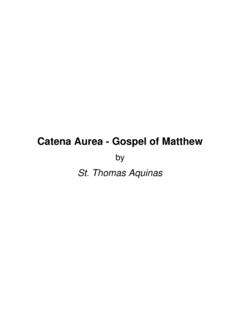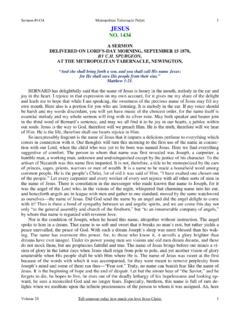Transcription of Effects of a Classroom-Based Program on Physical Activity ...
1 Effects of a Classroom-Based Program on Physical Activity and On-Task Behavior MATITHEW T. MAHAR', SHEILA K. MURPHY 1 , DAVID A. ROWE', JEANNIE GOLDEN2 , A. TAMLYN SHIELDS1 , and THOMAS D. RAEDEKE'. 1. Activity Promotion Laboratory,Department of Exercise and Sport Science, and 2 Department of Psychology, East Carolina University, Greenville, NC. ABSTRACT. MAHAR, M. T., S. K. MURPHY, D. A. ROWE, J. GOLDEN, A. T. SHIELDS, and T. D. RAEDEKE. Effects of a Classroom-Based Program on Physical Activity and On-Task Behavior. Med. Sci. Sports Exerc., Vol. 38, No. 12, pp. 2086-2094, 2006. Purpose: This study evaluated the Effects of a Classroom-Based Physical Activity Program on children's in-school Physical Activity levels and on-task behavior during academic instruction. Methods: Physical Activity of 243 students was assessed during school hours. Intervention- group students (N = 135) received a Classroom-Based Program ( , Energizers).
2 The control group (N = 108) did not receive Energizers. On-task behavior during academic instruction time was observed for 62 third-grade (N = 37) and fourth-grade students (N = 25) before and after Energizers activities. An independent groups t-test compared in-school Physical Activity levels between intervention and control classes. A multiple-baseline across-classrooms design was used to evaluate the effectiveness of the Energizers on on-task behavior. Additionally, a two-way (time [pre- vs postobservation] x period [baseline vs intervention]) repeated-measures analysis of variance compared on-task behavior between observation periods. Magnitudes of mean differences were evaluated with Cohen's delta (ES). Results: Students in the intervention group took significantly (P < ) more in-school steps (5587 1633) than control-group students (4805 1543), and the size of this difference was moderate (ES = ).
3 The intervention was effective in improving on-task behavior; after the Energizers were systematically implemented, on-task behavior systematically improved. The improvement in on-task behavior of 8% between the pre-Energizers and post-Energizers observations was statistically significant (P < ), and the difference was moderate (ES = ). Likewise, the least on-task students improved on-task behavior by 20%. after Energizers activities. This improvement was statistically significant (P < ) and meaningful (ES = ). Conclusion: A. Classroom-Based Physical Activity Program was effective for increasing daily in-school Physical Activity and improving on-task behavior during academic instruction. Key Words: DIRECT OBSERVATION, ENERGIZERS, MULTIPLE BASELINE DESIGN, PEDOMETER, SCHOOL-DAY Physical Activity . concentration and less fidgeting in the classroom (19), no obesity epidemic in the United States (7).
4 Low federal law requires states to have recess in schools. ack of of levels adequate physicalphysical activityactivity contributes have been to the attributed to Research examining the impact of school Physical limited opportunities for children to be active ( , unsafe Activity programs on Physical Activity levels and on class- neighborhoods, shortage of play spaces, increased tele- room behavior is needed to justify the incorporation of vision viewing after school, and increased demands of Physical Activity in school settings, especially to teachers formal schooling) (20). Because children and adolescents and administrators. We found only one published study that spend much of their time at school, the school environment examined the Effects of a Classroom-Based Physical Activity presents an excellent opportunity for youth to be physically Program on Physical Activity intensity during the Activity .
5 Active. Results provided evidence that classroom teachers can lead Because of budgetary constraints and growing pressure on elementary school-aged students in moderate- to vigorous- administrators and teachers to increase academic achieve- intensity Physical Activity in the classroom . Total Physical ment scores, opportunities for Physical Activity are being Activity during the school day and classroom behavior after reduced or eliminated. Although recess may result in better the Activity were not assessed (26). The importance of Physical Activity for overall Physical fitness and health is well known, but the positive impacts of Physical Activity on increasing concentration, mental Address for correspondence: Matthew T. Mahar, , Department of cognition, and academic performance (2,8,13,22-24) and Exercise and Sport Science, East Carolina University, Greenville, NC on reducing fidgeting, other self-stimulatory behaviors, and 27858; E-mail: school-related stress (10,11,13,21) are not as well under- Submitted for publication March 2006.
6 Stood. Children often are more attentive, behave better, and Accepted for publication June 2006. perform as well or better scholastically after participation 0195-9131/06/3812-2086/0 in Physical Activity through recess or Physical education MEDICINE & SCIENCE IN SPORTS & EXERCISE (1,13,21-24). Elementary school children who undergo Copyright 2006 by the American College of Sports Medicine prolonged periods of academic instruction often become more DOI: fidgety or restless and experience reduced concentration (19). 2086. Thus, long periods of instructional time without a break of on-task behavior were given an instruction sheet with might be counterproductive to academic performance. guidelines of when the observers would be in their To promote policy changes that require more Physical classroom , the time of day they should lead the Energizers Activity in school, empirical data are needed to document activities, and the date on which they should begin the positive Effects of school- based Physical Activity performing Energizers in their classroom .
7 programs . The purpose of this study was to evaluate the effectiveness of a Classroom-Based Physical Activity pro- Procedures gram on elementary school-aged children's Physical Activity levels during the school day and on on-task Design to assess Physical Activity . Physical behavior during academic instruction time. Activity levels were assessed with Yamax pedometers (model SW-200, Japan) to determine whether the daily in-school Activity levels of students who participated in the METHODS Energizers activities differed from the Activity levels of students who did not receive the Energizers Program . Participants Students wore pedometers for 5 d, and all students of the All kindergarten through fourth-grade students (15 same grade level wore pedometers during the same week. classes; three classes per grade level) at a public school The week in which each class level wore the pedometers in eastern North Carolina participated in a Classroom-Based was randomly selected.
8 Two classes were randomly Physical Activity Program called Energizers. Students selected from each grade level to serve as the intervention returning signed informed consent forms were assessed classes (except for grade 3, which had only one on the outcome variables of Physical Activity (91% intervention class). Because the third-grade classes wore returned signed consent forms) and on-task behavior pedometers early in the intervention, the two third-grade (83% returned signed consent forms). Physical Activity classes involved in the on-task behavior assessment (see was assessed at all grade levels. On-task behavior was below) were not allowed to implement the Energizers assessed in two randomly selected third-grade and two activities until after week 4; these classes served as control randomly selected fourth-grade classes. The study was classes for the Physical Activity assessment.
9 Intervention approved by the institutional review board of East Carolina classes were asked to perform an Energizers Activity every University and the local school district. school day. The control classes were asked to not perform Energizers activities until after the eighth week of the semester, after all classes had been assessed for Physical Intervention Activity . Eight weeks were needed for assessment of Energizers Classroom-Based Physical Activity Physical Activity because students did not attend school 5. Program . Energizers are short Classroom-Based Physical for some of the weeks during the fall semester activities. By allowing students to stand and move during because of holidays or teacher work days. The nine academic instruction, these activities provide students with intervention classes had slightly more students (N = 135). an opportunity to increase daily Physical Activity levels than the six control classes (N = 108).
10 During the school day. The activities last approximately 10 At the beginning of each week, pedometers were min, integrate grade-appropriate learning materials, involve distributed to the appropriate classes. Pedometers were no equipment, and require little teacher preparation. given to students at the beginning of each school day and Energizers activities can be downloaded at no charge from were collected from students at the end of each school day. In the present study, Outcome measures for Physical Activity . Each teachers were asked to lead one 10-min Activity per day for morning, students placed the pedometers on their belt or 12 wk. Teachers were trained to lead the activities, were pants at the midline of their thigh and reset the pedometer. provided with copies of all of the activities, and were Students (grades 3 and 4) or teachers (kindergarten and allowed to choose whichever Activity they wanted each day.)






